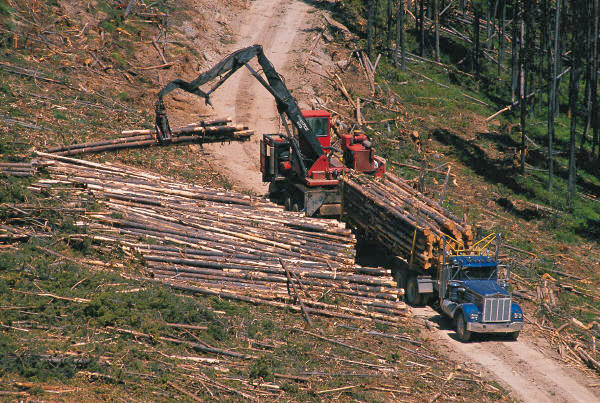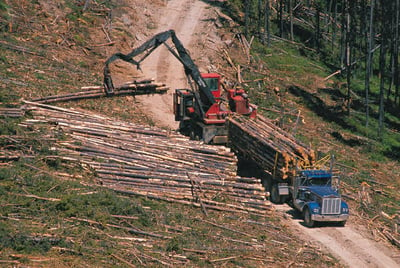2 min read
Marketing Timber: Selecting the Best Method of Sale and Payment
 Joe Clark
:
October 27, 2021
Joe Clark
:
October 27, 2021

Before timber can be marketed, the method of sale and the method of payment must be selected. These selections will play a role in the amount of time and energy the landowner will need to expend in order to complete the sale, the price that will be paid for the timber, and the amount of tax that will need to be paid on the revenue generated from the sale.
In the current market, there are two primary methods for selling timber:
- Single Offer
A single offer sale occurs when a seller contacts or is contacted by a buyer, and the buyer makes an offer to purchase the timber at a specific price. Sometimes, the single offer is a first and final offer. Other times, negotiations are undertaken until the buyer and seller agree to a price. Single offer sales are a good option if the seller already knows a buyer with a good reputation and wants to work with that buyer. One drawback to this type of sale is that unless the seller and his or her representative is knowledgeable about the local market and market prices, the lack of competition—where multiple buyers are bidding against each other—may result in a lower sales price.
- Sealed Bid
In most situations, written sealed bids provide the most desirable results for timberland owners. With this type of sale, potential buyers are notified of the sale, given a period of time to examine and value the timber and submit bids. Then, at a specified time and place, the bids are opened, and the winning bidder is chosen. Sealed bid sales generally attract the highest number of buyers. The resulting competition may increase the price. Sealed bid sales simplify administration of the sale, are convenient for both buyers and sellers and protect the seller by requiring the payment of earnest money.
Though not as common as they once were, oral auctions are also used for timberland sales in certain regions; they are typically reserved for high-value timber sales or when several woodlots can be auctioned at one time. However, they can be complicated to administer, and they require a high degree of timber market expertise. For that reason, it is not the type of sale most timberland owners undertake without the assistance of a professional forester.
Following a timber sale, there are two payment methods for stumpage: lump sum and pay-as-cut. With a lump sum sale, the buyer agrees to pay a fixed amount for the timber prior to harvest. The sales price is based on the timber inventory and therefore, it is important that both the seller and the buyer have an accurate inventory prior to agreeing on a price. One advantage of the lump sum sale for the timberland owner is that, once full payment is made, the buyer assumes all the risk of timber loss from damage, theft or overestimation of value. This assumption of risk, as well as the costs of financing the pre-payment, timber inventory, title search and road work, can reduce the price paid to the seller.
With a pay-as-cut sale, also known as a sale-by-unit or scale sale, a specific amount of money is paid for each unit of product cut. While an initial partial payment is made, the rest of the contract amount is paid as timber is harvested. The disadvantages for timberland owners for this type of sale include:
- The seller retains the risk of loss until the timber is harvested
- Close monitoring of the sale is critical in order to ensure an accurate accounting
- The total income from harvest cannot be known until the last log is harvested.
As a result, pay-as-cut sales are preferable when time is of the essence or when either inventorying or harvesting the tract will be difficult. When the seller wants to ensure capital gains tax treatment for the income realized from the sale, a pay-as-cut sale is used as well (lump sum sales qualify for capital gains treatment only if certain conditions are met).
For the latest information on the tax treatment of timber sales, visit http://www.timbertax.org.





